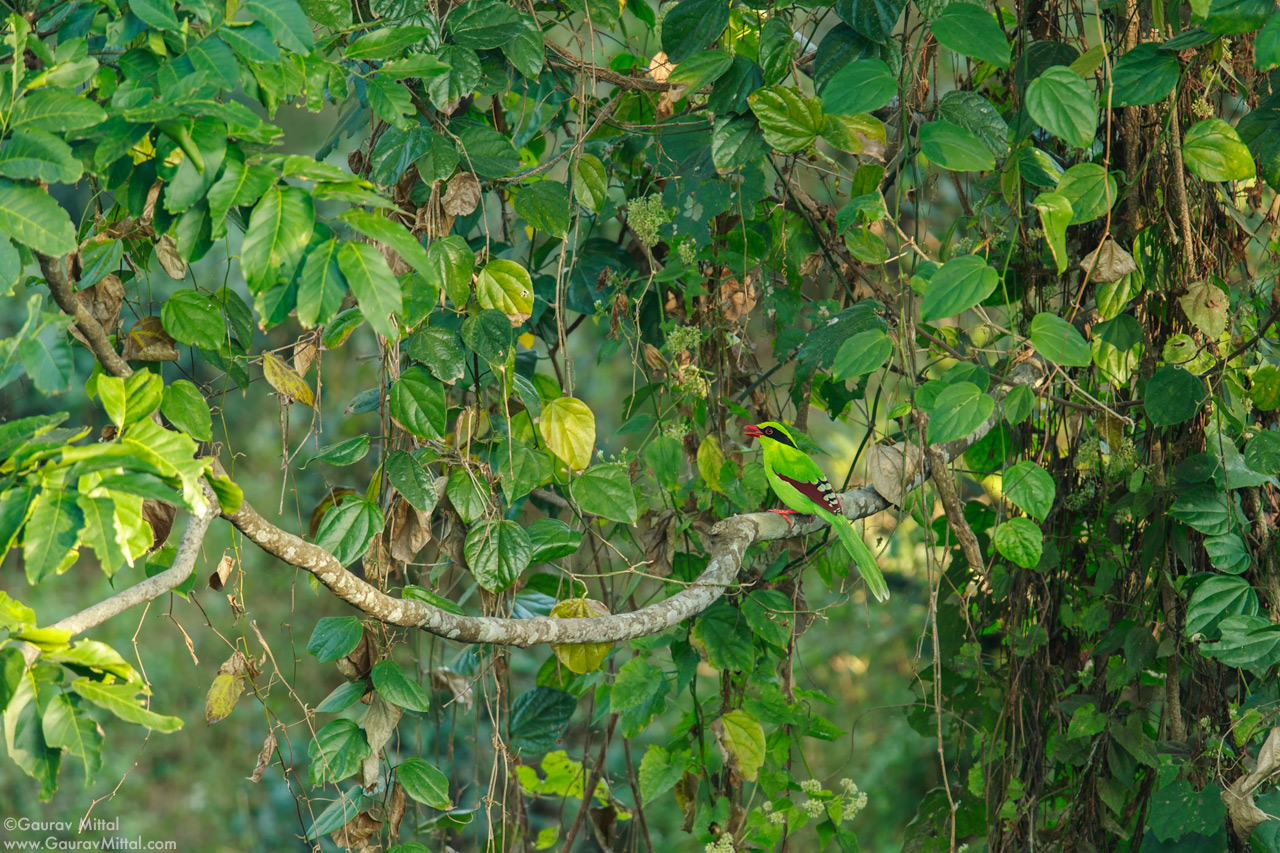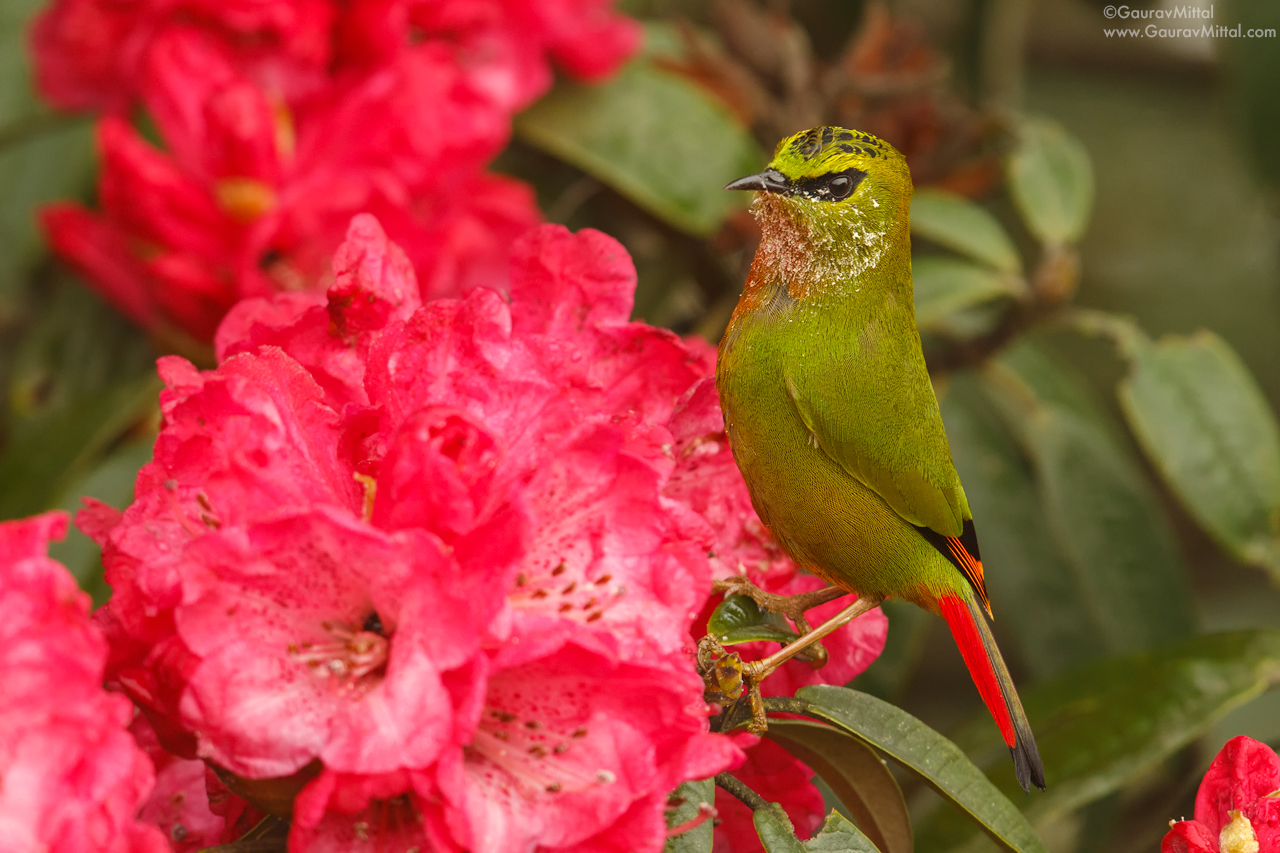08
Sep
Tips For Photographing Birds at High Altitudes – Part II
- By Gaurav Mittal
- No Comments
In part two of this two-part article, I continue to provide you with tips for photographing birds at high altitudes.
Continued from… Tips for Photographing Birds at High Altitudes – Part 1
Composition and Background
Birds in the mountain forests come out into the open for very short durations and then dive back into thick foliage; and when they do perch, they may have branches of trees behind and around them. It’s a goal to always get birds with clean backgrounds behind them, so this can be discouraging. In such situations, think about going wide or shooting a bird perched from afar and showing its habitat. Such images give good insight into how a bird lives.
Camera Settings
Make sure that your camera is set to shoot in RAW mode and Adobe RGB color space; these modes give you maximum control over processing your images and provide the widest available color gamut. I mostly shoot in aperture priority or manual mode; however, I prefer aperture priority mode for small and skittish birds as there are fewer settings to fiddle with and I can dial in exposure compensation quickly with a single dial. Set the drive mode on your camera to AI Servo/Continues mode; this allows you to maintain focus on moving subjects. When you look through the viewfinder, you see a grid of squares spread around, often referred to as a “cluster of points”. These are the focus points that assist in locking onto the subject. Today’s cameras offer up to seven auto-focus area selections, I recommend selecting the Single Point or Spot AF for locking focus when shooting perched birds. For tracking a moving bird, the AF point expansion mode is very effective. Start at ISO 800 and increase if the light gets worse.
In the End, it’s Your Passion
Whether you are shooting birds, other wildlife, or landscapes, it’s dedication and focus that determines how far you’ll go in succeeding as a photographer. My goal is to consistently push myself to enhance my photography skills, to explore new locations, and to learn about new birds. Always remember to respect nature and your subject; if a situation arises that makes you feel uncertain or leads you or your subject to sense danger, leave it alone. Come back to it again tomorrow with a fresh mind and a different approach.







Submit a Comment